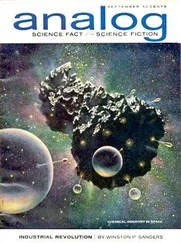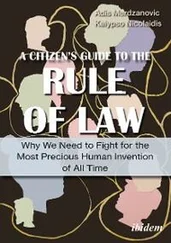The Afghans broke into open rebellion in 1841. They cut the British link to India and turned on the British in Kabul. Thousands of troops and civilians were pinned down in their fort and slowly slaughtered. At a conference with the Afghan leader, a deal was arranged allowing the British to leave during the first week of 1842. Immediately, the slow-moving caravan suffered grievously from the harsh cold and attacks by bands of Afghans. The dead mounted over the ensuing days as the Afghan attackers swooped down at them as they staggered through snow-covered mountain passes. The death march lasted a week. One solitary survivor reached the British garrison at Jalalabad. Although the British army returned later that year to exact revenge on the Afghans, the British adventure in Afghanistan had arrived at a ruinous end.
The Soviets did not find this blazing example of defeat germane to their situation. Empire cruise control was turned on, the tanks were gassed up, and they were ready to roll.
WHAT HAPPENED: OPERATION “MASSIVE REFLUX”
The first week went perfectly. The next ten years were all downhill. In early December 1979, the Soviets infiltrated soldiers into Afghanistan to scout out key locations in and around Kabul. They also snuck in their latest puppet, Babrak Karmal, as Amin’s successor and stashed him at an air base. Finally, on Christmas Eve the Soviets rolled. The Soviet Fortieth Army — yes, the Russians had lots of armies — crossed the Amu Darya River into Afghanistan as troops deplaned at the Kabul airport. By Christmas morning the army was racing forward. Two days later they entered Kabul, seized the radio and TV stations and key government ministries, and surrounded Amin in his palace. A siege raged over a few hours, but it ended as expected with Amin riddled with Soviet bullets. Another election Afghan-style, this one with Soviet monitors.
As the Soviets clucked over their brilliant stroke, the Afghan warlords and tribal leaders watched in anger. The descendants of warriors who fought Alexander the Great and slaughtered thousands of British troops, sharpened their knives. Once again it became time for them to repel foreign invaders. They put aside their many differences and focused on one goal: kill Soviets. They called themselves mujahideen — soldiers of God.
To the Americans, they were soldiers from heaven. Long before Amin was killed, U.S. national security advisor Zbigniew Brzezinski urged President Jimmy Carter to support the Afghan rebels and finally fight the Soviets. The final struggle of the Cold War was on.
This secret war screamed out for one group, the CIA, to take command. Starting with the debacle of the Bay of Pigs in 1961, the CIA had slowly lost credibility and power in the States, and by the late 1970s had fallen to its lowest level of prestige. Things got so bad even Congress was looking over their shoulder. Now opportunity knocked. Afghanistan would become their raison d’être. The CIA was stocked with bitter Vietnam vets who smiled at the thought of arming soldiers to kill the Soviets, a main supplier to the North Vietnamese. And the war would give a flagging CIA a leg up in Washington. As long as day-in-and-day-out Soviets were dying, the CIA was back on its game. Guns for all became their rallying cry.
The U.S. leaders had no illusion the rebels could actually defeat the Soviets. They were happy to just force the Soviets to fight — and die — in the barren mountains of Afghanistan. But the United States had a practical problem. To reach Afghanistan, supplies had to cross Pakistan. Fortunately, the Pakistan dictator, Mohammed Zia-ul Haq shared the American devotion to killing Soviets, as long as he could get a fat cut of the booty.
Zia was a devout Muslim who declared Pakistan an Islamic state when he took command in 1977, but he tempered his religious zeal with heavy doses of political realism. During the struggles within Afghanistan between the Communists and Islamists, he sheltered Islamic leaders, such as Massoud. Once the Soviets invaded, Zia saw both the need and the opportunity to risk a fight. First, he feared getting squeezed between a powerful Soviet puppet on his western border and Pakistan’s traditional enemy India on his eastern flank. And by supporting the Islamic fighters he would gain serious street cred in the Muslim world. Once the Americans started tossing money around like drunken investment bankers at a strip club, Zia seized his golden opportunity. He would help the United States fight the Soviets and help himself to unlimited, unmarked CIA cash and military toys. It became a textbook case of doing well while doing good. As the Afghan resistance geared up with American hardware, the CIA station in Pakistan took control of the U.S. supply operation. It was a humble, mom-and-pop shop, confined to a handful of people who funneled about $30 million in cash and arms to the rebels. But to satisfy Zia, the United States had no direct contacts with the Afghan rebels. Instead, the money went directly to the Pakistan intelligence service, ISI, who doled it out as they wished to their favorites. The CIA didn’t know who got what, nor did they care. They were big-picture Russian killers, not micromanagers.
Zia, seeing the value in his position, turned down a $400 million aid package from the Carter administration. Peanuts! When Reagan took office in 1981, the money became serious, and Zia got a tidy $3.2 billion package to bolster his own military and fledgling nuclear weapons program.
On the ground in Afghanistan, the situation quickly turned bad for the Soviets. Babrak Karmal’s army dissolved further when deserters brought their weapons over to the rebels. Most of the soldiers had more loyalty to the various tribes and warlords they were fighting than to Karmal or his foreign supporters. Uprisings that sprang up in the streets of Kabul were quieted down by Soviet machine-gun fire. But like the British 150 years earlier, the Soviets never succeeded in controlling the harsh mountainous countryside — and that, as it has throughout Afghan history, is where the resistance thrived.
By the spring of 1980, rebel fighters were ambushing Soviet army units and honing their hit-and-run tactics. The Soviets responded by destroying villages and killing civilians, the knee-jerk superpower plan to win over the local hearts and minds, as perfected by the United States in Vietnam.
To help the rebels, the CIA scoured the world for weapons that would not reveal their source. CIA buyers fanned out to purchase thousands of Soviet-made rifles from Egypt and Poland, chuckling to themselves over the irony of Soviet weapons killing Soviets. Even better, China proved a major ally in the cause, and the CIA secretly bought thousands of guns from them too, providing the Chinese with a handsome profit. In a war against Communists, a Communist country was engaging in aggressive capitalism to kill other Communists, natch. Oh, the biting irony of clandestine war.
To help the mujahideen, Zia set up training camps along the Afghan border. As the war grew, the entire region became dedicated to the fight with packed camps, warehouses, hospitals, and a road network. The CIA money flowed, and the Pakistan army and ISI partook handsomely from the American swag.
The U.S. involvement increased when President Reagan appointed William Casey to head the CIA in 1981. Casey first joined the spy business during World War II when he commanded the operation by the OSS — the predecessor of the CIA — to run spies into Nazi Germany. Casey deployed a secret weapon to achieve success within the Washington bureaucracy: mumbling. Few could understand him. Tired of asking Casey to repeat himself, people would simply politely nod and agree with him. Reagan himself would give up and just tell Casey to go ahead with whatever mumbled plot he had just hatched. Casey always maintained total deniability that he mumbled. The problem was with the listeners, he thought, all thousands of them.
Читать дальше












